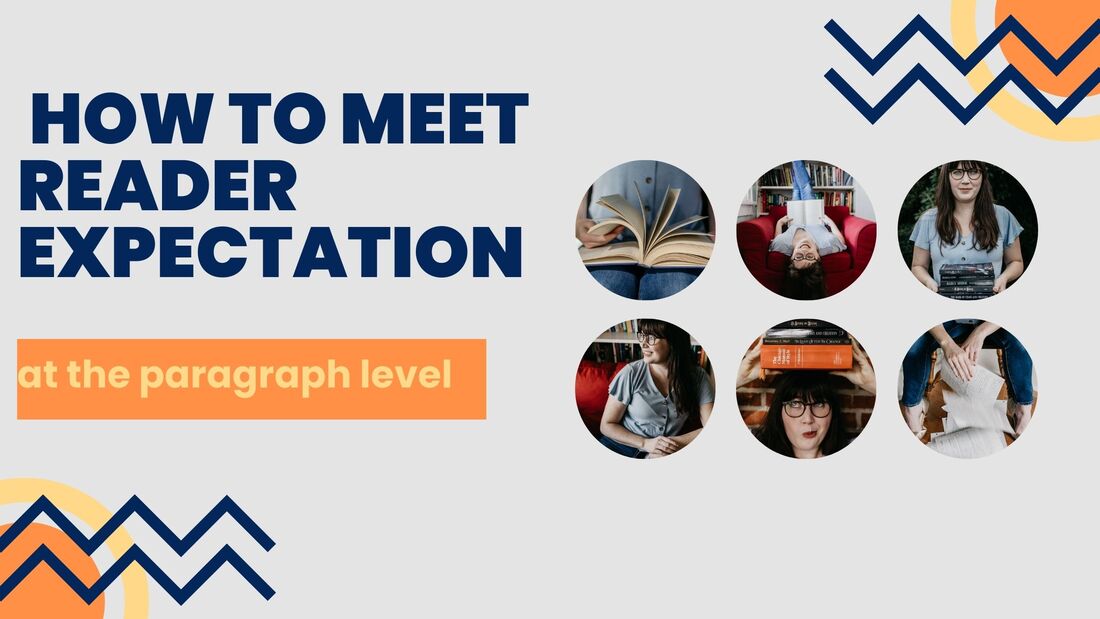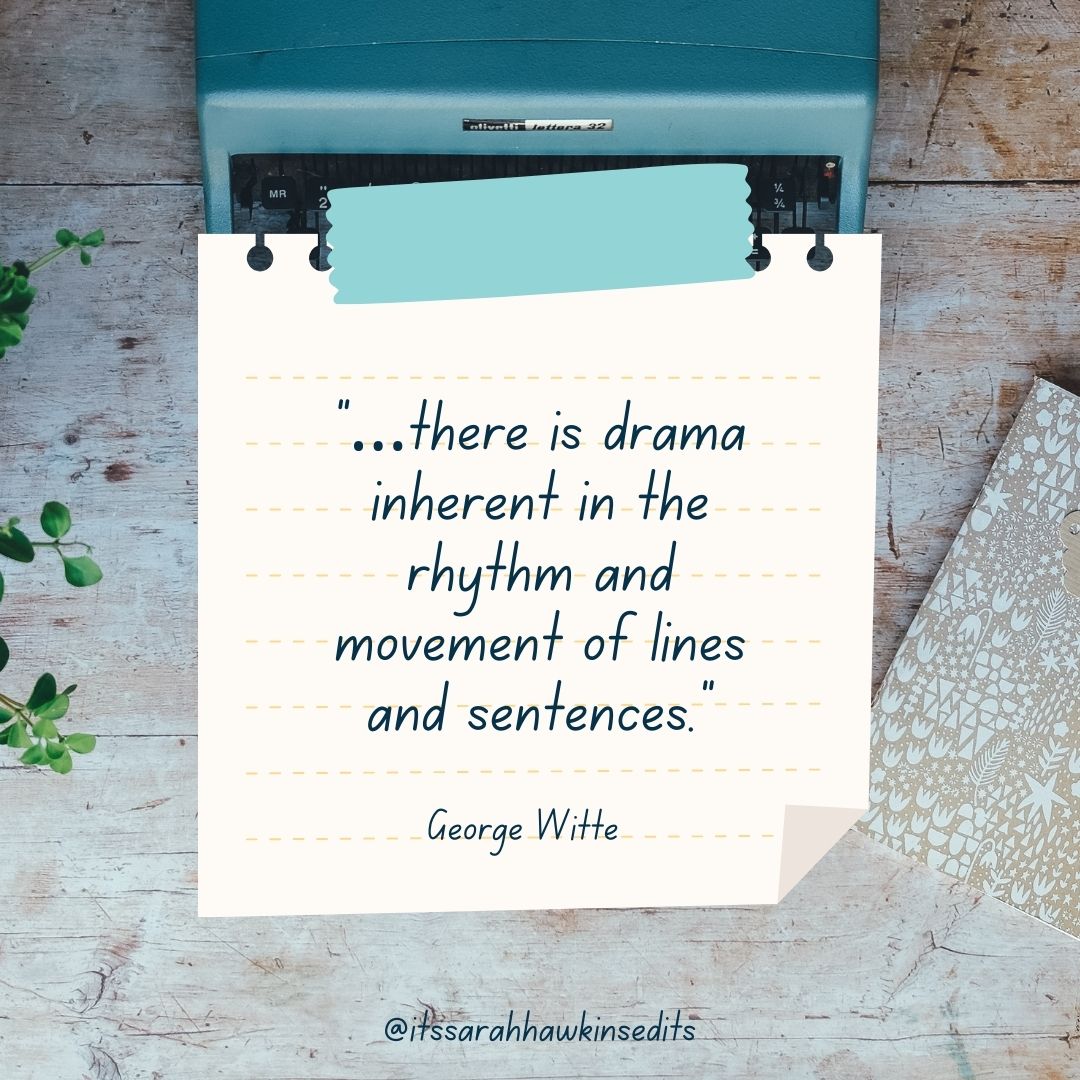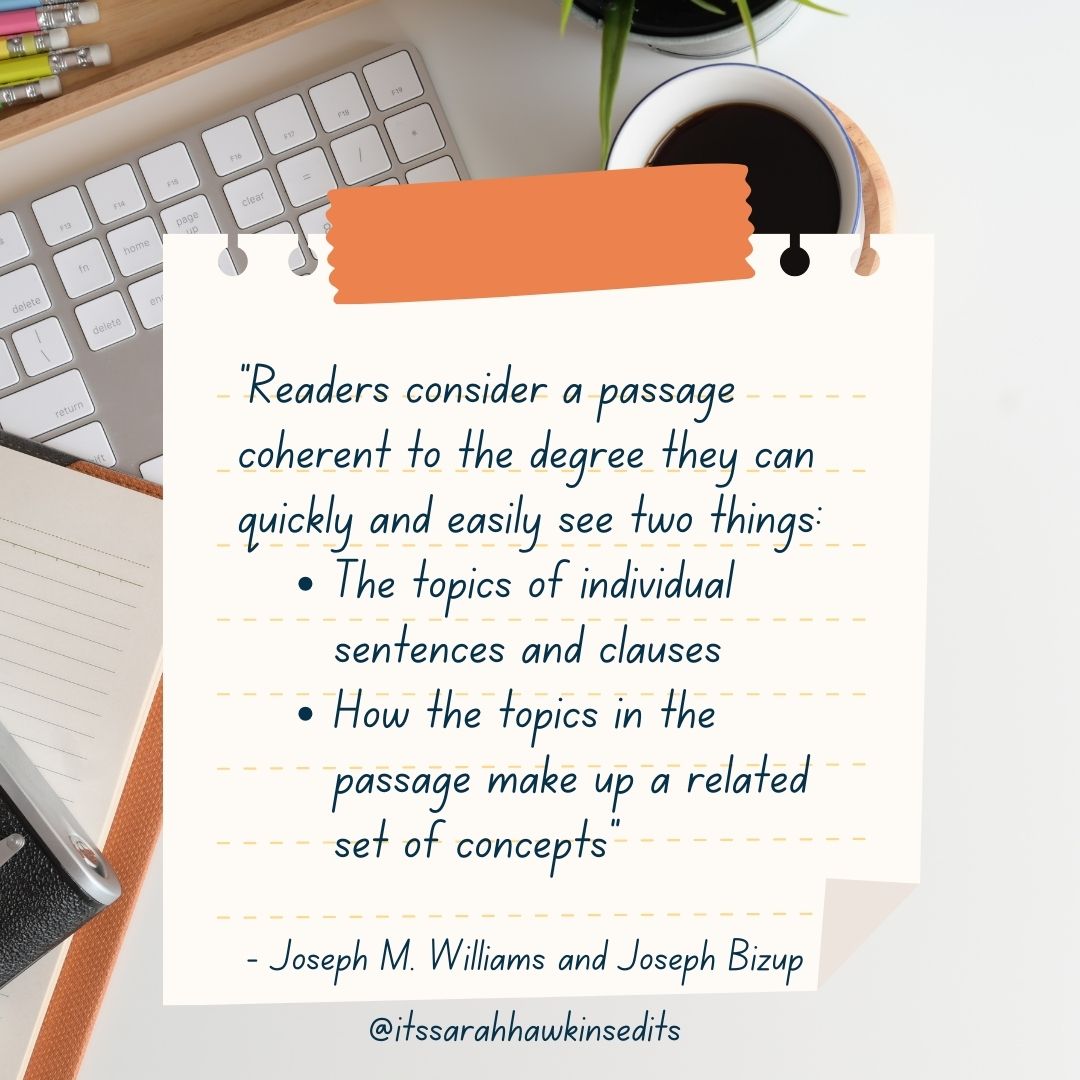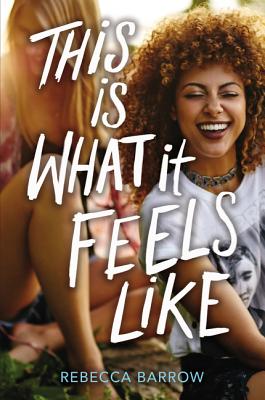What's discussed in this post
What is cohesion and why is it important?
When reader expectation is not met, the narrative may read awkwardly, causing the reader’s concentration to break briefly or the reader to backtrack to glean meaning out of what they just read. This disrupts the reader’s immersion and gives them the opportunity to put down your book! No one wants that. This guide explains how to meet reader expectation at the paragraph level with the known-new contract, so you can revise your writing for cohesion with confidence. What is the known-new contract and how does it apply to paragraphs?As explained in my post, “How to meet reader expectation at the sentence level,” the known-new contract is how the reader learns new information: by connecting it to what they already know. If you struggle with meeting the known-new contract, your sentences may provide only new information consecutively, creating a choppy, disconnected flow. At the paragraph level, the known-new contract begins with the opening sentence. Reader expectation is set in that first sentence because it tells the reader what is coming. Essentially, the first sentence of every paragraph acts as a topic sentence, and the sentences that follow act like subtopics or supporting details.
The 3 paragraph patternsThere are 3 paragraph patterns that every writer should be aware of:
The repeated topic paragraph patternAs inferred in the name of the pattern, the repeated topic paragraph pattern takes full advantage of repetition as a cohesive tool. The topic presented in the first sentence becomes the known information for the full paragraph, and this known information regularly remains in the subject position, although the phrasing of the subject may change to synonyms, related words, or pronouns to create variety. This paragraph pattern works for:
Examples
Here, LaCour introduces the topic of “a speech” that the narrator has prepared, and then uses the repeated pronoun “It” to refer back to the topic, the speech, while adding supporting detail to create depth to the speech without us having to hear it all. The pronoun “it” doesn’t have any other meaning until the direct speech quote. Not only is it a prime example of the repeated topic paragraph pattern, but it’s also a great example of balancing showing and telling with description. (If you want to study description, I highly recommend Everything Leads to You!)
Like LaCour, Barrow uses a repeated pronoun and its antecedent to move the reader through this paragraph. Unlike the LaCour example, the topic of this paragraph—Hannah’s relationship to smoking—is not stated outright, but it is no less clear through her lighting the cigarette and the act of smoking instantly soothing her. Barrow then uses not only a repeated pronoun and its antecedent (Hannah, she, her) but also related words (cigarette, click-hiss-exhale, the thing, a big smoker, something, that, the smoking, it, a way not to drink). The known-new paragraph patternThe known-new pattern allows the topic of the sentence to progressively change throughout the paragraph by using the new information in one sentence as the known information in the next. So, the information in the predicate becomes the subject of the next sentence, and each sentence after the topic sentence acts either as a subtopic of the first sentence, or a supporting detail of the sentence directly before it. This type of paragraph pattern works for:
Examples Here, Hahn uses the known-new contract to introduce a new character to this scene. The predicate of the first sentence, even as my phone buzzes with a text, sets up the introduction and leaves the reader asking Who? The question is answered immediately as the subject of the next sentence: Micah. We then find out what Micah’s doing, what his motivations are, and why. This is a short paragraph of 2 sentences and therefore highlights cohesion at the sentence level as well as paragraph level. Barrow uses the known-new contract to introduce multiple characters to the narrator’s life: he sees the band, and we find out who is in the band. The information paragraph patternIn the information pattern, each sentence after the first sentence is a supporting detail of the topic. The supporting details act as subtopics, and they are all known information because they are in the same domain as the topic sentence. They are information that a reader expects as relevant. This works for:
Examples See? I told you that you should read Everything Leads to You if you want to study description! LaCour uses the information pattern here to describe a character’s house. Each subject in the independent clauses that follow I pull up in front of her house is a subtopic: the shutters in the front windows, junk mail, a few small pots. Even though it’s all new information, it’s what the reader would expect to learn about a house, and therefore it acts as known information to them.
Here, Hahn uses the information pattern for an introspective paragraph. The topic is the narrator wondering if he’s ruined her for anyone else and how effed up that is (Hahn uses a fragment here for dramatic effect, but the first two sentences are one idea). Each subject of the subsequent sentences act as subtopics staying in the domain of her explaining why that thought is effed up. Quick tips
Further study
0 Comments
|
AuthorSarah Hawkins is a geek for the written word. She's an author and freelance editor who seeks to promote and uplift the authors around her. Categories
All
Archives
December 2023
|









 RSS Feed
RSS Feed
